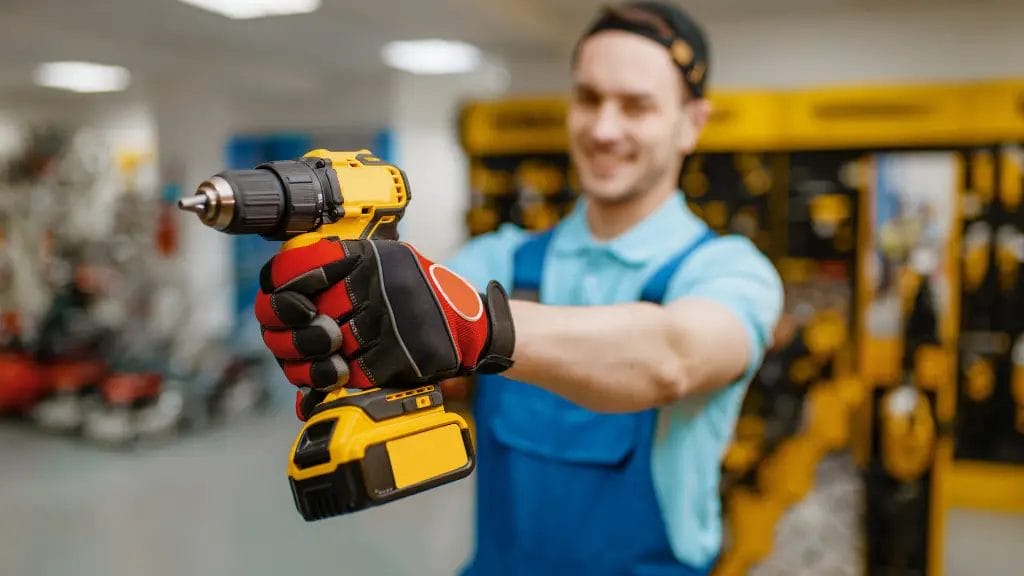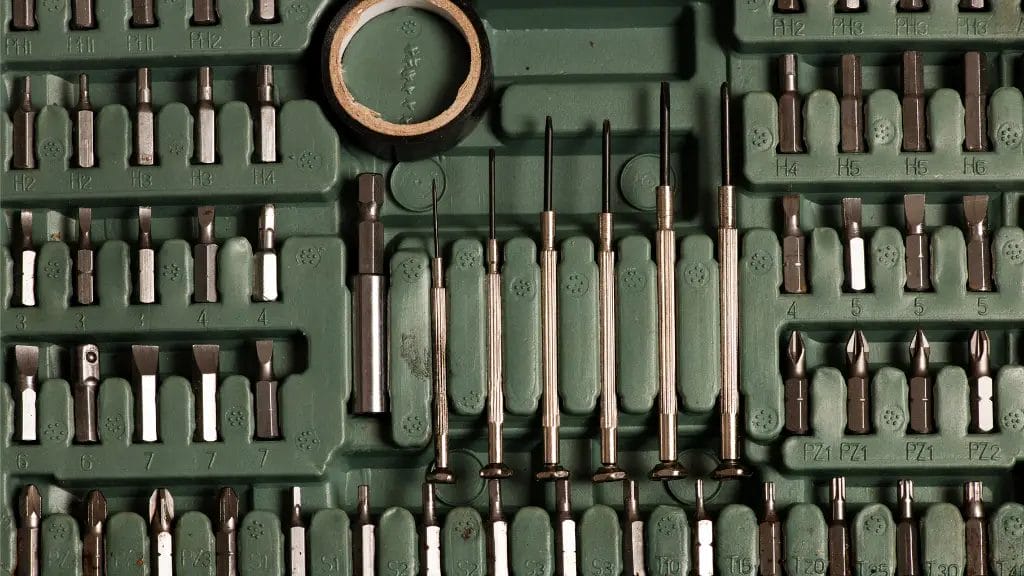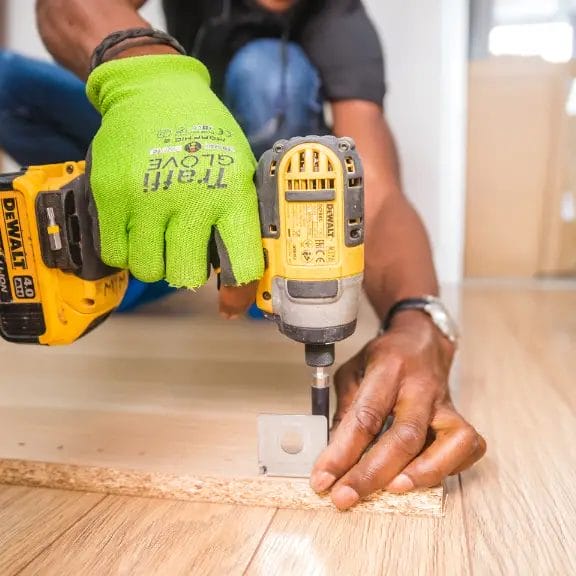
Impact drivers are one of the most popular cordless power tools for use around the house because they’re much more efficient than comparable standard drills.
They can be used in much the same way as a standard drill, but impact drivers are designed for driving screws into hard surfaces like wood, or steel.
The difference is that impact drivers have a hammer mechanism that uses the stored rotational energy from the drill to deliver a heavy impact to the screw.
This delivers more power to the screw than a conventional drill, so it’s much less effort to drive in screws.
Choosing an Impact Driver
If you’ve been eyeing that new deck or those fancy cabinets and have debated buying a power tool that can really help you, it’s time to bite the bullet and go for it.
You’ve waited long enough and you’re ready to take your DIY skills to the next level.
While you might have a drill for smaller projects, you’ll need to start thinking about an impact driver.
Impact drivers are great tools for serious DIYers and remodelers.
They make quick work of tough jobs like driving large lag screws and putting up drywall.
However, their power and speed also make them dangerous to use and difficult to control. That makes them a bad choice for novice DIYers.
If you are looking for the right impact driver to add to your workshop, then you need to make sure you are getting a model that has a power rating that is going to be suitable for the type of work you are going to be doing.
A very powerful impact driver may be overkill for light work, and a very weak impact driver may not be able to handle the tougher projects.
How to use Impact Driver
Impact drivers are an essential tool for the construction worker, mechanic, and anyone who needs to drive in fasteners on a regular basis.
This tool is a handheld motor that uses an interchangeable bit and provides a powerful rotation. It is designed to put more force behind the bit than a typical drill or screwdriver, so it can drive in larger and longer screws faster and more easily than these other options.
But if you’re new to the tool, using it can be tricky. Here’s a step-by-step guide to using an impact driver.
Step 1:
The first step when using an impact driver is to select the correct bit. Impact drivers come with a wide variety of bits, each designed to be used for a different type of work.

Choosing the most appropriate bit for the job makes the job easier and faster, so it is important to take a moment to choose the right bit before using it
Step 2:
Check the manual to make sure your impact driver has a reverse feature. If it doesn’t, you won’t be able to remove the screws you’ve driven in.
Step 3:
Slide the jaws of the impact driver over the bit of the screwdriver.

Step 4:
Insert the bit and screwdriver, which is now part of the impact driver, into the chuck of the impact driver.

Step 5:
Choose the right speed setting for the job.
If you’re looking to use an impact driver to drive fasteners deep into hardwood, you can do it with a couple of different kinds of fasteners.
You can put a self-drilling screw into a pilot hole with an impact driver, but you may be better off using an impact bit. If you really want to get good results, use a countersink bit and a hole saw.
Cordless Impact Driver
A cordless impact driver is an advanced driver-drill that delivers a lot more torque than a cordless drill.
It is designed to drive in screws at high speed and generates a lot of power.
The cordless impact driver uses a trigger that you push to turn on the motor inside the tool.
The driver-drill is powered by a rechargeable battery.
This is a tool that is most often used by people who do woodworking, who are professionals in construction, or by people who are in the construction industry.
Difference between Impact Drivers and Drills
An impact driver is a tool used to drive in screws into hardwood. The impact driver is designed to make it easier to drive in screws.
The driver is used by putting it on the screw then turning the tool on. The driver then turns the screw in quickly and easily.
While a drill is also used to drive in screws into wood. A drill is similar to an impact driver in that the drill has a motor that spins a piece of metal that is shaped like a screw.
The difference is that the metal bit on the drill does not spin the whole way. It stops spinning when it starts contact with the wood.
When to Use an Impact Driver
The impact driver is harder to use than the drill, but it is ideal for tasks like tightening bolts or driving screws into metal.
The drill-driver on the other hand is more suited for applications where the bit will not be held in a fixed position, like drilling holes or driving screws into wood.
With the right impact driver you can easily drive screws into hardwood or metal, up to 2 inches long.
The impact driver allows you to drive screws faster and more powerfully, with less effort.
It is also necessary to use the correct drill bits for the job. All drill bits are designed for use with a specific tool.
In Conclusion
Impact drivers are one of the best tools you can have in your tool kit as a DIY’er. They’re great for driving in large screws, and even kickstarting stubborn bolts or screws that simply won’t turn. To get the most from your impact driver: Use the right type of bit for the job.

But they are a little different than other power tools, and if you use an impact driver incorrectly, you can damage the screws you’re trying to drive in or even strip the screws entirely.
A power tool like an impact driver can be a great way to quickly and easily complete a DIY home project.
